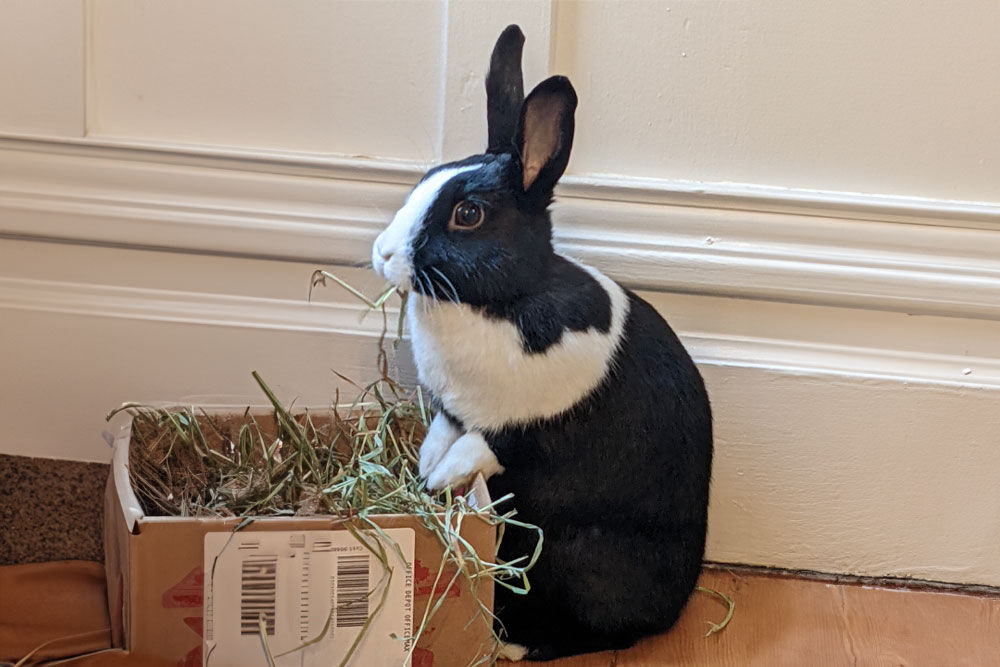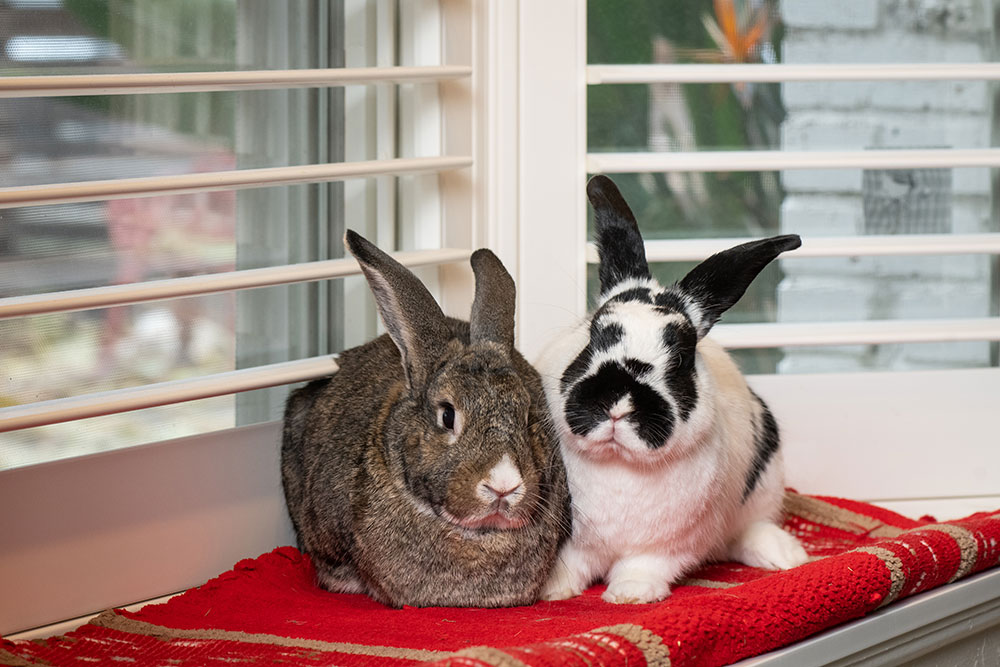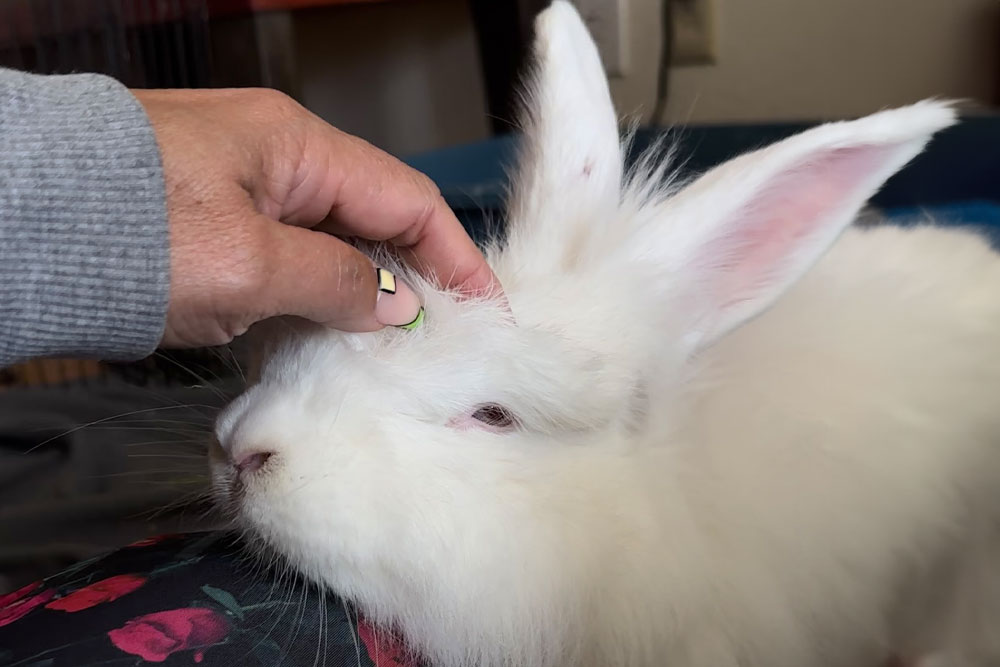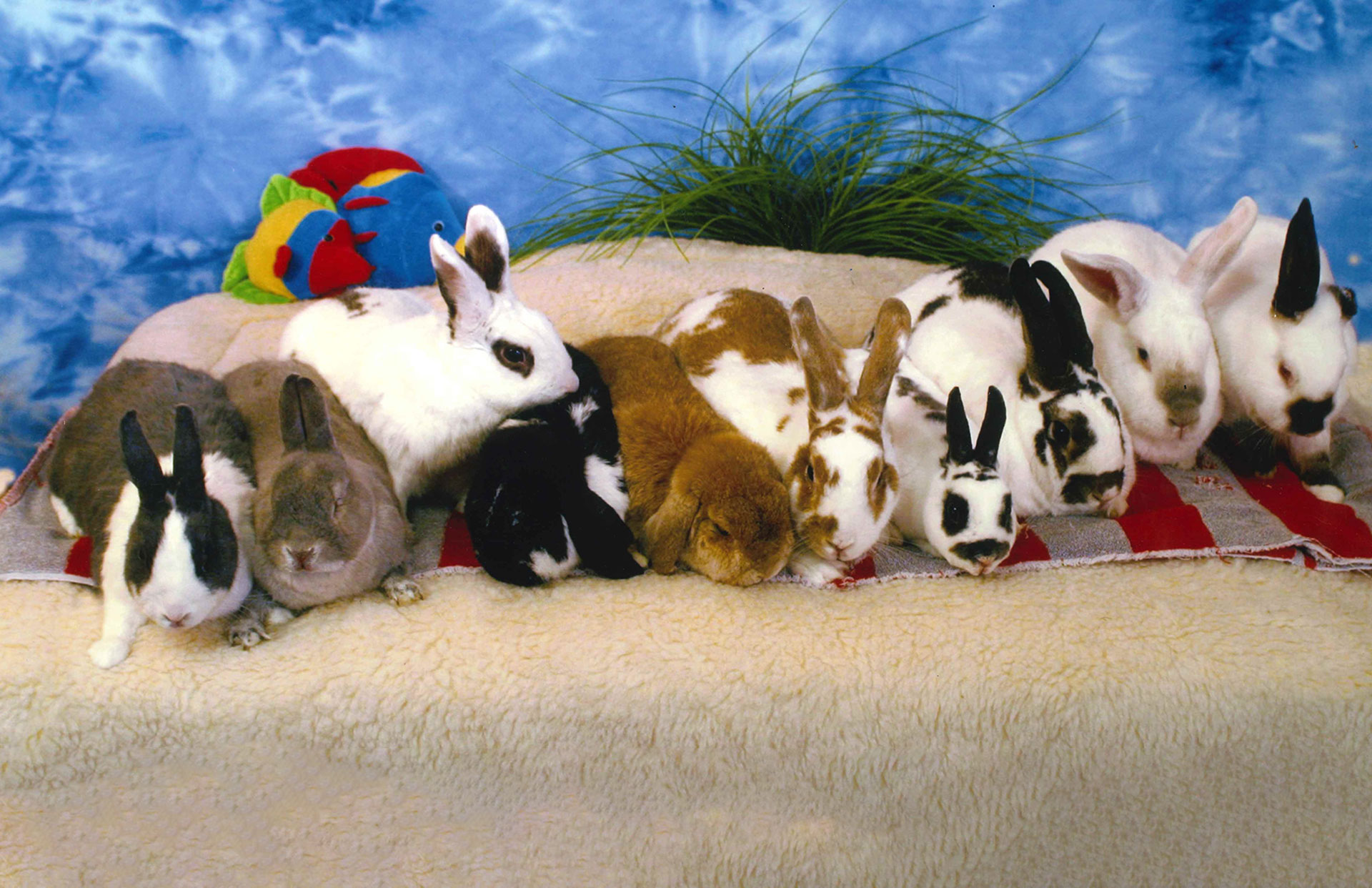Many things have changed for rabbits since House Rabbit Society’s incorporation as an animal welfare nonprofit in 1988. Back then, the entire concept of house rabbits was unusual: rabbits living indoors, side by side with their humans; some even daring not to live in cages? Amazing.
I was a college student sharing my dorm room with a rabbit named Patrick. I realized that when I was a kid, there was a difference made between “barn cats” and “house cats.” As I got older, that distinction disappeared, and it was just, “cats.” We’re still waiting for that to happen for house rabbits, but we’re on our way. Marinell Harriman, author of all five editions of the seminal House Rabbit Handbook and founder of House Rabbit Society, is credited for popularizing the term “house rabbit.” She’s also recognized for creating a movement.

Food, Litter, Toys
There’s a saying: “It’s a wonder my first rabbit ever survived.” A profound change is what we feed our rabbits. At that time, it was a never-empty bowl of pellets, big chunk of carrot, maybe a few bits of vegetables—and if there was hay, it was alfalfa. No wonder digestive troubles were common. Now, for an adult rabbit, it’s often a quarter cup of timothy pellets, lots of leafy veggies, LOTS of hay, and, if any, a little carrot. An old rabbit then was seven years old. Now, it’s not uncommon to meet house rabbits 10-14 years old or more.
Also, how many rabbit guardians have become vegetarians and vegans because of their herbivore roommates? These households often have multiple litterboxes using safe litter (no more cedar shavings) as well as multiple rabbits, perhaps no pet enclosures, and lots of rabbit toys. These changes have increased the health, safety, and fun for both rabbits and their humans.

Rabbit Health
Another huge difference, in health and in taming overpopulation, is that HRS preached the vital importance of spaying and neutering. This procedure not only prevents unwanted litters but reduces some major health and behavior issues. It also expands the options for rabbits’ rabbit companions. (That is, boys and girls can be together without the opportunity for exponential numbers of babies.) Rabbit neuters were not common. My Patrick had the honor of being the first HRS rabbit to get fixed. Spaying a rabbit wasn’t even possible because there wasn’t a safe general anesthesia.
Fewer Surrenders
In parts of the U.S., there was a demonstrable reduction in the number of rabbits being surrendered to—and euthanized at—shelters. Partly it was from HRS efforts to share the wonders of rabbits as indoor companions, explanations and strategies for their natural behaviors, and repetition of the advantages of “spay/neuter.” One thing that made HRS unusual was that we purposefully worked with animal shelters. Most rescue groups then avoided shelters because they “killed.” HRS had a shelter animal behaviorist on our founding board, Amy Espie Shapiro, who guided us in working with shelters to change their attitude that rabbits were short-lived and disposable. Within a few years of working with Peninsula Humane Society, in San Mateo County, California, their rabbit numbers decreased from taking in some 700 rabbits per year (and euthanizing most) to taking in some 250 rabbits, of which most were adopted.
A Better Vaccine
One more monumental medical advancement has been the development of the Medgene vaccine, a recombinant vaccine for rabbit hemorrhagic disease virus, or RHDV2. This new formulation means that no rabbits need to be killed to save the lives of thousands of other rabbits.

Animals Valued
Attitudes about adopting shelter animals have evolved. Having a “rescue” pet is now to be admired. Animals in general have undergone a shift in values, as well, with more humane legislation being enacted bit by bit. For instance, HRS and other groups advocated for the passage of laws banning the retail sale of dogs, cats, AND rabbits in California and New York. There’s so much more to be done, but we know that it is possible to make changes.
Teach, Repeat
That’s not to say there are not constant challenges. Shelter staff turnover is routine, meaning that the inroads gained to rewrite institutional attitudes will need to be repeated. There are often more homeless rabbits than rescue groups, their fosters, and shelters can accommodate. All of which was compounded by COVID. Many shelters emptied during that period, only for the number of surrenders in the past couple of years to explode since the pandemic ended, with people going back to work, moving out of state, and uncertain times. The number of unaltered rabbits—due to a shortage of veterinarians and spay/neuters then—resulted in vast numbers of rabbits having rabbits.
The Next 35 and Beyond
In some ways it feels like we’re starting over. But that is part of rescue and education. It’s the constant flow of training new generations. Learning, changing, and doing it again and again.
Over the years, HRS expanded from a local rescue and national educational resource into a global education nexus. With our members’ support and their volunteer work, we can advance rescued house rabbits beyond where we are. And make house rabbits, “rabbits.”
Reviewed by HRS staff
Author: Beth Woolbright, Founding & Current Board Member, HRS EducatorPhoto Credit: Ken Marks, Julie Cheshire, Craig Church, Cait Reizman
Journal Issue: House Rabbit Journal, Fall 2023





